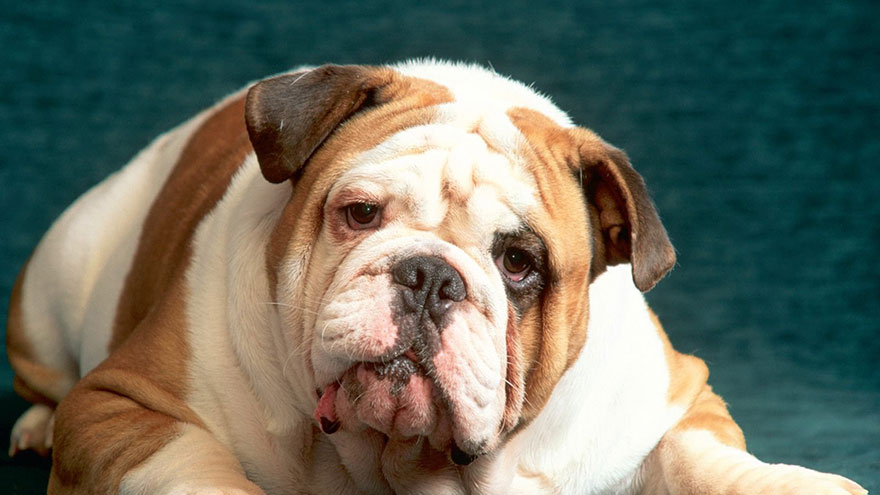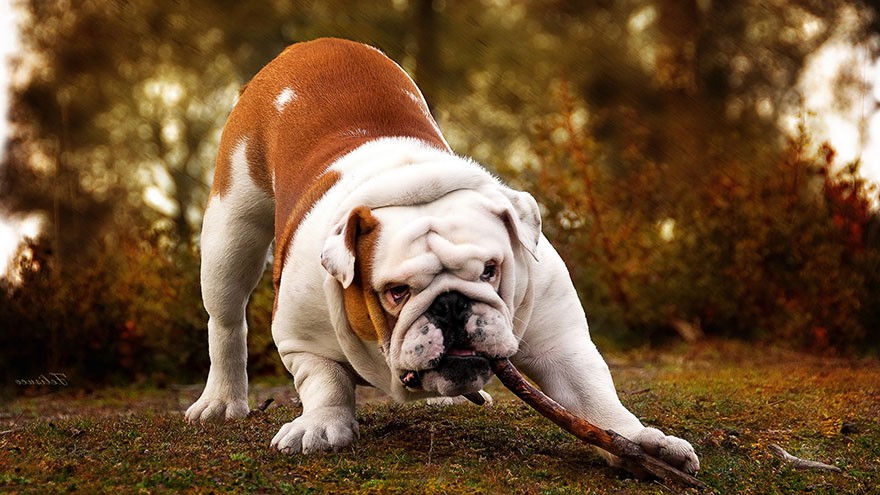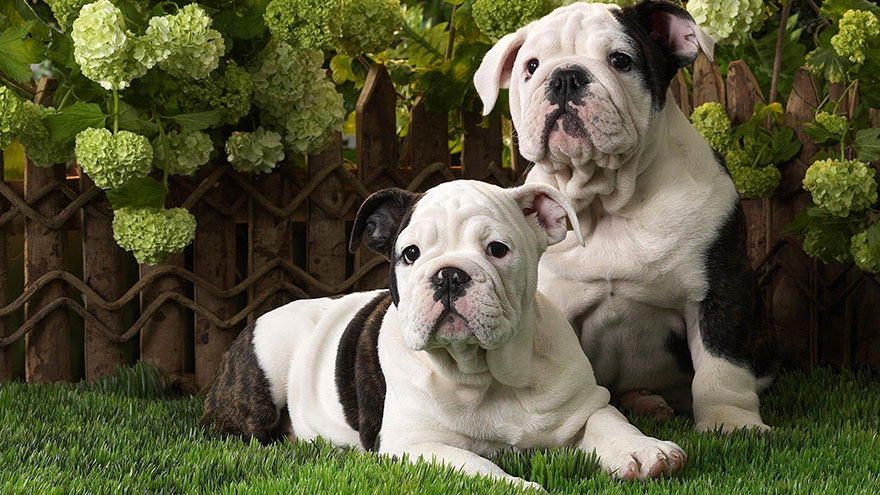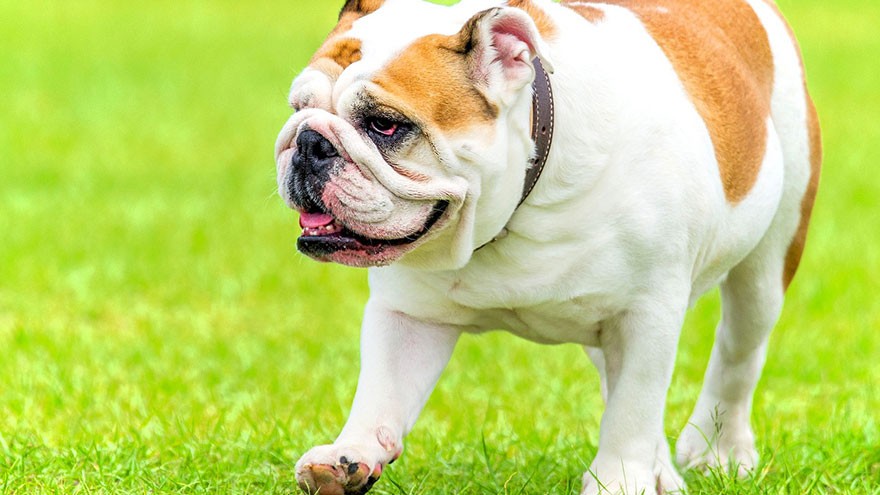Bulldog Breed Information
The Bulldog is a non-sporting dog that has a heavy, low-swung body. The breed’s normal disposition is one of vigor, strength, and durability. Originating in the British Isles, the name was created from “bull”, which references the dog’s use in bull baiting, an unusually cruel thing. Interesting, the early Bulldog was extremely mean.
In fact, this breed was so ferocious that it seemed completely unaware of physical pain.
However, by 1835, the sport of dog fighting became illegal in England, which meant the deterioration of the breed. Some people who loved the Bulldog and knew it could be a loving pet decided to join forces to preserve the breed. Over time, the negative characteristics were eliminated to the dog we see today, a loving, proud, and faithful pet. While the Bulldog still has its strong, boxy body, its personality is soft and gentle.
Bulldog Temperament
The Bulldog of today is actually quite charming and comical. The key to having a docile dog starts with early socialization. Although the Bulldog is generally great with people, it is important that the dog have proper handling at a young age.
Typically, this breed does not require much exercise and additionally, a cool home is most comfortable. The best way to describe the temperament of the Bulldog is as an English gentleman. Although this dog can be socialized to be great around children, the Bulldog prefers a quiet home and a comfortable surrounding.

Bulldog Size and Color
The Bulldog has a strong body with a medium-size build. On average, this breed weighs between 40 and 60 pounds with the male being on the upper end of the scale. For height, the Bulldog ranges from 13 to 15 inches at the withers. Unfortunately, this particular breed does not live long. Even with proper diet and exercise, the breed does not usually live beyond 10 years.
In addition, the Bulldog has a smooth coat with only continual shedding. However, with regular brushing and monthly bathing, the shedding is controllable. For colors, you see this breed with a white, fawn, red, brindle, or patched coat.
If you were interested in showing your Bulldog, you want to look for a massive, short-faced dog that has strong and wide shoulders. Interestingly, most people look at the Bulldog believing it is a mean dog but again, with proper love and socialization, it makes a wonderful pet.

RELATED :: Facts About Bulldog Puppies
Bulldog Feeding and Grooming Requirements
Obviously, you want to feed your Bulldog puppy a highly quality puppy food. Typically, the dog would be provided with three smaller meals during the first year. After that, you would need to cut feedings back to two meals a day and no more.
With this breed, it is important that you always feed it on schedule. In other words, if you choose the morning meal for 8:00 and the evening meal for 6:00, follow this same schedule every day.
The most important thing with a Bulldog is proper food. Again, choose only top qualify dry food or you could make homemade food but only what is acceptable for this dog. In fact, food made for humans can actually be dangerous, if not deadly for the Bulldog, usually because of salt content.

For instance, you want to avoid foods such as French fries, cheese, canned broth or gravy, buttermilk, and cottage cheese.
Other foods that should definitely be avoided include:
Chocolate
Containing an ingredient called Theobromine, which can cause hypertension in Bulldogs, leading to hyperactivity, vomiting, and diarrhea.
Raw Eggs
Uncooked eggs put your dog at risk for salmonella poisoning. Additionally, feeding the breed raw eggs long-term could cause a deficiency in a vitamin B component known as biotin.
Bones
Never feed your dog bones, which can become lodged or break off causing internal damage. Rawhide bones should also be avoided, which commonly become lodged in the dog’s throat.
Onions and Garlic
Although harmless to humans, onions, and garlic can cause serious blood problems in some breeds.
Sugar
Bulldogs can experience both tooth decay and obesity with sugar.
Beef
This meat often causes issues with gas
High Protein Foods
In this case, you would see hotspots develop
Bulldog Exercise Needs
Many people love the Bulldog because the breed does not need much exercise. For this reason, this particular breed is a great choice for homes with yards or apartment dwellers.
Typically, a short 15-minute walk every day or two is sufficient. Remember, the Bulldog tends to tire out easily and walks slowly so you want to make sure you do not over-exercise it.

Read More About Bulldog
- Bulldog : 10 Most Common Questions
- Bulldog Training Guide
- Bulldog Health Guide
- Owning a Bulldog : Breeder Recommendations

